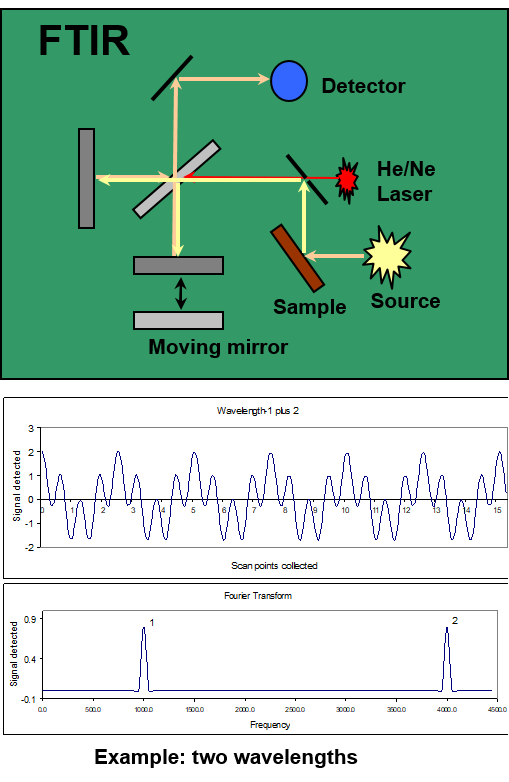FTIR Spectroscopy
Fourier-transform infrared (FT-IR) spectroscopy is a technique for estimating the infrared spectrum of emission, or of adsorption, of a compound. The FTIR method uses a "moving mirror" Michelson interferometer, rather than a diffraction grating, to split the infrared radiation into its frequencies. This method captures all the incident infrared radiation thus providing very high energy. The moving mirror position is referenced against a HeNe laser also providing high frequency accuracy. The frequencies for a typical FTIR spectrometer range from about 8000 to 400 cm-1 (wavenumbers) which includes part of the near-infrared (NIR) and all of the mid-infrared (MIR). Because of this high energy throughput, MIR diffuse reflectance (DRIFT) spectroscopy becomes an efficient option for rapidly scanning powdered samples.
1. The infrared beam is simply focussed onto or through the sample.
The infrared beam is simply focussed onto or through the sample.
2. The reflected beam is split by the Michelson interferometer with one fixed and one moving mirror.
3. As the moving mirror changes position we get interference.
4. The position is referenced against a HeNe laser interference pattern.
5. Each wavelength contributes to the interference pattern.
6. The interferogram is then transformed with a Fourier Transform function to obtain a spectrum.
Used in
Read more |
Read also |
|
|
Janik LJ, et al. (2009). Chemometrics and Intelligent Laboratory Systems 97, 179–188 |
Contact
 Les Janik
Les Janik
SCIRO
Email: Les.Janik@sciro.au
